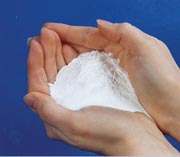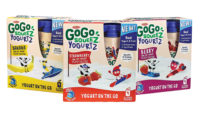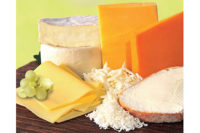

For the past five years, the California Dairy Research Foundation (CDRF), the U.S. Dairy Export Council (USDEC) and California Polytechnic State University (Cal Poly) in San Luis Obispo have sponsored the Concentrated and Dried Dairy Ingredients Symposium, a gathering of researchers from throughout the world to examine concentrated and dried dairy ingredients and discuss emerging opportunities, technologies and applications, especially in the functional foods arena.
Dairy Foods caught up with CDRF Executive Director Joseph O'Donnell to see what trends are emerging for dairy ingredients in the functional foods marketplace and beyond.
Q: What dairy-derived functional peptides have application in dairy foods, and what structure-function claims can be made?
A: During the symposium we discussed potential health benefits that could be obtained by using purified peptides as ingredients, including helping to decrease anxiety, aiding in mineral adsorption, regulating appetite and assisting in liver detoxification. According to my colleague Bruce German at UC Davis, there are a number of milk proteins and peptides currently being used in health-related products throughout the world. Several companies are utilizing certain peptides from bovine casein and whey protein fractions to lower blood pressure. Lactoferrin is being used
as an antimicrobial. Casein-glycomacropeptide (CGMP), the kappa-casein peptide released during cheesemaking, offers functionality for protecting teeth from cavities. Casein phosphoproteins have been discovered to have similar dental protective properties as CGMP but with the added ability to remineralize teeth. Milk basic proteins, a crude mixture of proteins from whey, have been shown in studies in Japan to protect adults from bone loss. And, finally, whey proteins have become the darlings of the body building set for their muscle building properties.
Q: What types of functional dairy ingredients are used in other countries and in what applications? Do you foresee such products entering the U.S. marketplace?
A: European manufacturers (and consumers) have always been much more open to the area of functional foods -- the popularity of products like Yakult offer a perfect example. USDEC's Veronique LaGrange highlighted at the symposium a number of international products that are currently utilizing functional dairy ingredients. For example, there are infant formulas in Korea and Japan made with hydrolyzed whey proteins to make them more like breast milk, as well as lactoferrin and lactulose for intestinal health and increased immunity. She also showed a Chinese product made with bovine colostrum that was labeled as a nutritional liquid for toddlers and adults. In dairy beverages, she addressed such trends as combining milk with fruit juices or adding milk minerals, whey proteins or peptides. Functional trends on the horizon include creating products with longevity, wellness, performance and therapeutic properties including flavored milk with bioactive peptides to lower blood pressure, ice cocoa milk drinks with polyphenols to reduce the risk of cancer and weight loss tablets with glycomacropeptides. Products aimed at improving bone and tooth health and those containing pre- and probiotics are also increasing in the market, as are performance or sports products available in a variety of forms from jelly drinks with whey protein to sport milk candy.
It's hard to tell what products will make it here first. The United States is just now waking up to the potential for functional foods. Over the next five years, there will be tremendous growth as our global economy trickles down and American consumers start demanding the products available to their contemporaries throughout the world.
Q: What is some dairy ingredient research in progress and what implications will the findings have for the U.S. marketplace?
A: One of the most significant research projects in the works is the use of technology developed to track the human genome to look at the genome system responsible for milk with the goal of developing milk-derived dietary components that can influence human physiology. The implications for the U.S. dairy market, as well as the consumer are enormous-in a very positive way. Once we understand the roles specific milk proteins play, we can optimize select attributes to address the dietary needs of consumers while at the same time increasing our efficiency for separation and formulation. As outrageous as it sounds, the work is under way and the results are right around the corner.


